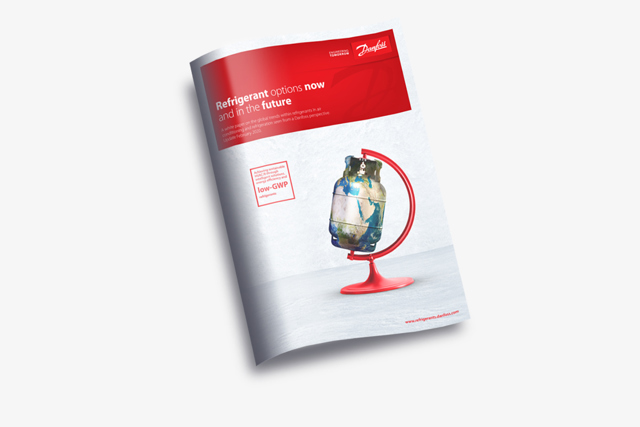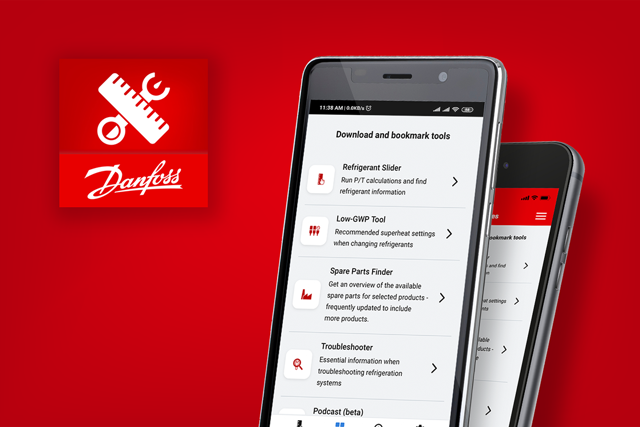Refrigerants with a modest GWP
Facing the regulatory pressures to eliminate high-GWP refrigerants, many alternatives are being proposed. There is a trade-off between a lower GWP and flammability. Most of the current refrigerants have no simple low-GWP drop-in solutions: flammability is linked to GWP and refrigerant capacity.
Lower GWP and higher capacity comes with increased flammability.
To date, the focus has been on new unsaturated fluoro-chemicals, also known as hydrofluoroolefins (HFOs), especially R1234yf, R1234ze(E), and R1233zd. They have very low GWP levels, are non-flammable or only mildly flammable, and belong to a group of lower density refrigerants. R1233zd has a very low ODP value (only a small percentage of R22) but this remains a problem in a few countries like Denmark.
To lower the GWP of higher density HFCs, HFOs are mixed with HFCs. As seen in the 2 illustrations below, the proposed blends within the same group are similar to each other, with the main differences being based on which R1234 type is used and the exact refrigerant it is replacing.
Refrigerant classes
According to ASHRAE 34, refrigerants are divided into classes depending on toxicity and flammability. A1 refrigerants are non-flammable and have very low toxicity. At the other end of the scale, with high flammability and high toxicity, no B3 refrigerants are available. Hydrocarbons, characterized by low toxicity and high flammability, require special precautions. Ammonia, on the
other hand, is highly toxic and has low flammability. It is widely used, especially in industrial refrigeration due to its high energy efficiency.
The A2L subgroup is made up of refrigerants with a low flammability. Flame propagation speed is low, less than 10 cm/s. These refrigerants are already playing a significant role as we move away from the old high-GWP HFCs.
Composition and GWP
There are application-specific pros and cons for using refrigerants. How do the energy-efficiency improvement schemes match? Is it intended for a fast drop-in or is it part of a major redesign cycle? What are the climate conditions and will the local markets be ready to handle the refrigerant? What is the impact of glide from a service perspective? Will it make sense to go for one type of refrigerant or will a dual strategy be better? Today it is evident that A2L refrigerants are efficient and available – albeit a tremendous amount of new refrigerant releases are evident. Components are also available or likely to be soon. For R1234ze some special conditions apply. R1234ze is categorized as an A2L refrigerant but is only flammable above 30°C. This is why the EN 378, which is harmonized with the EU PED Directive, does not recognize R1234ze as a hazardous substance, but as a PED group 2 fluid. This has the positive effect that it avoids material traceability for pipes and components until 100 mm in normative diameter while the other flammable refrigerants need traceability at 25 mm.
One of the biggest challenges has been to develop a non-flammable low-GWP R410A substitution. This was impossible with H, C and F-based molecules until the introduction of ionide. R466A is a refrigerant designed for R410 drop-in, with a GWP of 730, and it’s composed by R32, R125, and CF3I. The CF3I molecule containing iodine is known as a flammability suppressor, but it also has an ODP value yet not accounted for in the Montreal Protocol. Material compatibility, development, and testing of components is mostly ongoing.




